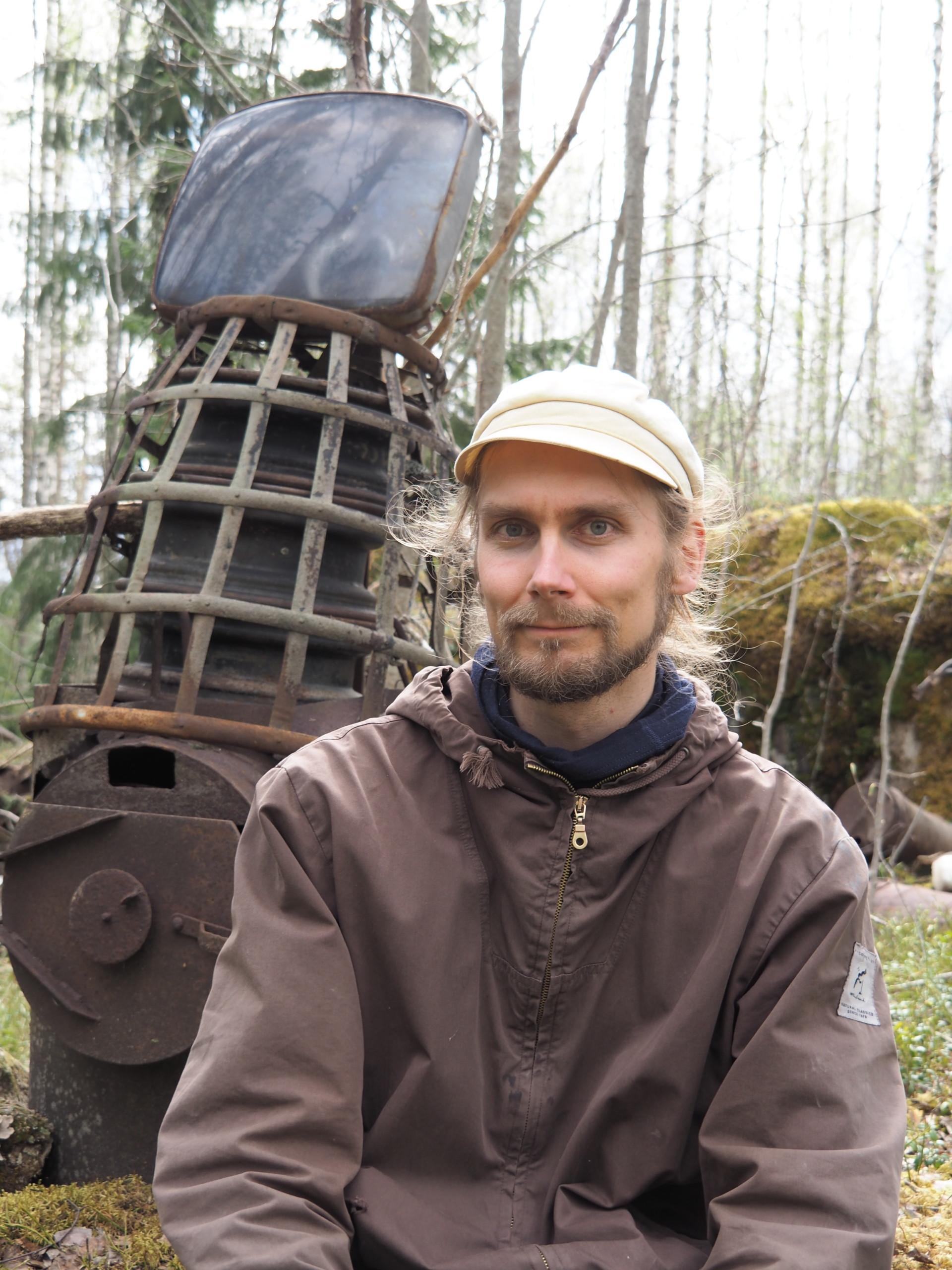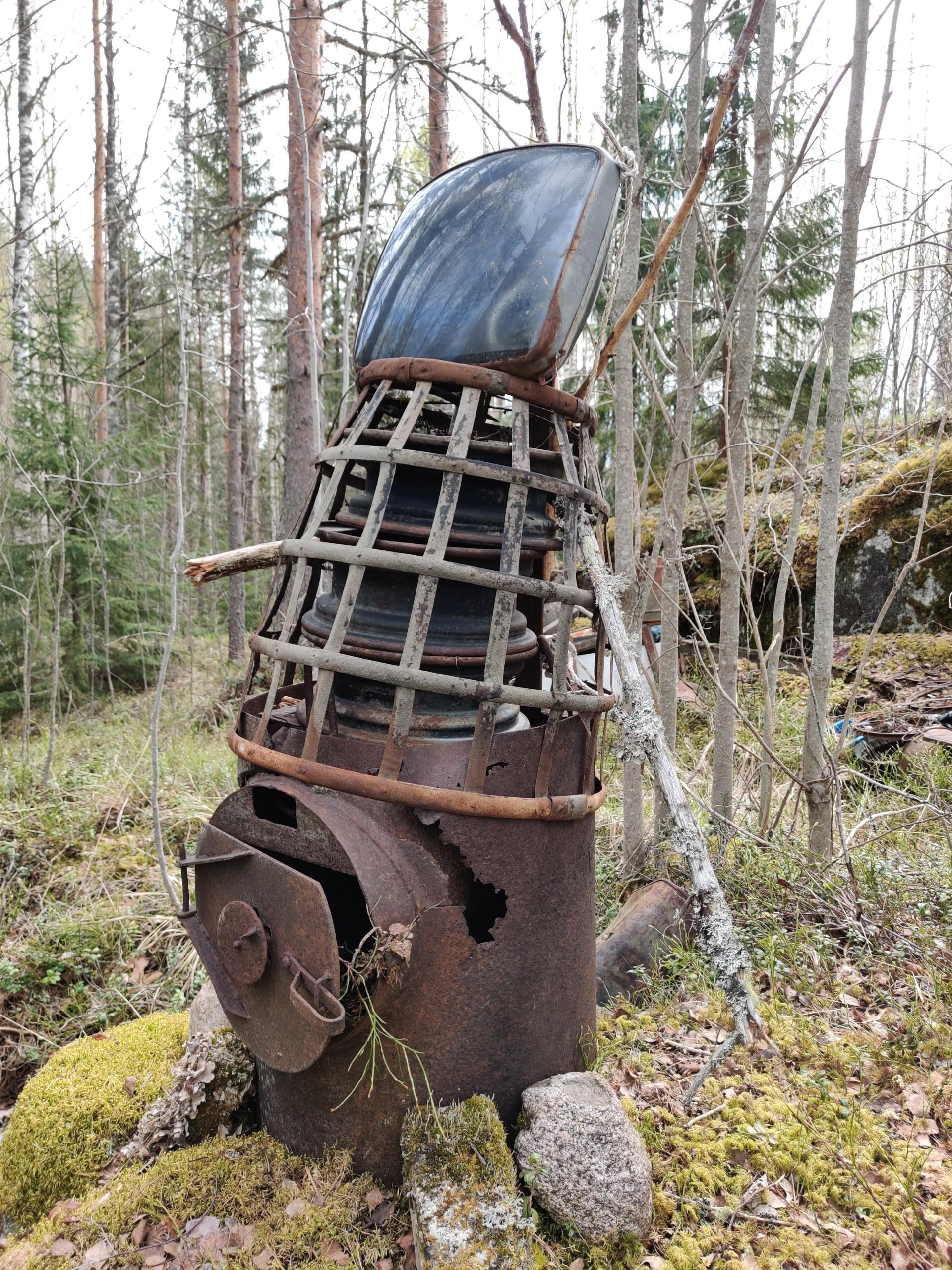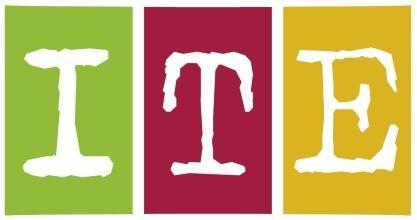


Osma Naukkarinen
Rautalampi (1988)
The works of Osma Naukkarinen emerge from a dialogue with nature and the site. Over time, his sculptures become habitats for wood fungi and cavity nesters. Mosses and lichens are allowed to decorate the surface of the works, and insects are allowed to settle in.
ITE art is a way for Naukkarinen to communicate with a place and its nature while revitalising the landscape. Some of his works require careful studying, a perception of nature.
Naukkarinen includes in his work what already exists on the site or tries to create a place that is complemented by nature that is bigger than human beings.
He has carefully piled wood into a stack near the new shed in his garden and finished both ends of the stack with trunks arranged in the shape of a kota hut. The stack-end artwork acts as a huge bug hotel.
The stones that he removed from under the stack are now piled on top of each other as a figure called The Guard of the trees. The removal of a stubborn stump led to a day-long conversation with nature, and now the stump, roughly carved with an axe, has place of honour at the end of the stack.
The totem that guards the central rock in the garden is the work of a beaver. Naukkarinen waited for a year before he dared to lift the trunk. Waiting is his way of asking nature’s permission.
A request, respect, greeting and thanks are the words that Naukkarinen uses when he talks about a space, the environment and what it has to offer. Being polite to the environment also means apologising and making amends.
A couple of summers ago, Naukkarinen started clearing some willows that covered the view of a small pond at the end of the garden. When he had been cutting the willows for a while, he began to wonder who actually had the right: was it his, to clear the view over to the sauna porch, or the willows’ to cover the view?
As a result of this conversation, he decided not to finish clearing them, but turned the thickest branch he had already cut into the Spirit of the willow. The work blends into its original site so well that it only becomes discernible when the artist points out its location.
The house’s previous inhabitants left behind a scrapyard on the side of the garden, with piles of old appliances and scrap metal, both rusty and rust-free metal. Naukkarinen used an old stove, car wheels, some iron net and a TV screen to create the work entitled the Lord of the ants. It stands on a rock, against which rests a rusty iron plate, embroidered by nature’s artist collective – mosses and lichens.
Naukkarinen made the sturdy Geezers of east as a thank you to the birches that he had to cut down to make way for construction. He left the stumps two metres tall for the totems. He intends to make more living statues for different wood fungi and cavity nesters to move in.
Naukkarinen, who works as a wilderness guide and Kalevala bonesetter, describes his works as animist. The human mind and senses try, by nature, to see the things around them as living, which is also the undercurrent in his works.
Text and images: Irene Pakkanen.
